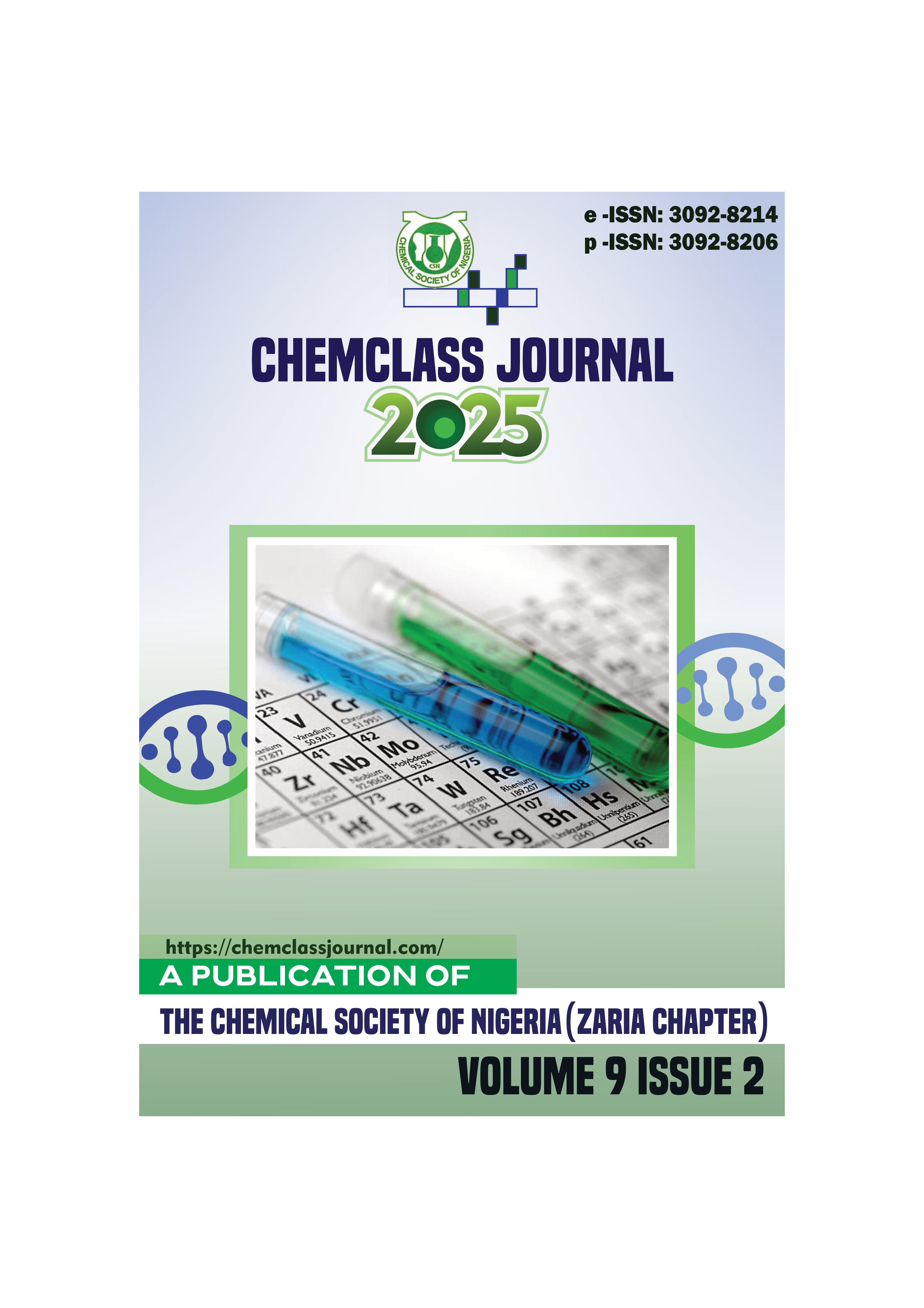Phytochemical, Physiochemical and Spectroscopic Analysis of Oil Extracted From the Seeds of Hisbiscus Cannabinus L. (Kenaf)
DOI:
https://doi.org/10.33003/chemclas-2025-0901/158Keywords:
Hibiscus cannabinus , Kenaf seed oil , Physico-chemical properties , Phytochemical analysis , Spectroscopic characterizationAbstract
Hibiscus cannabinus L. is a plant that is found in many communities, where it is being used as an
ingredient of soup for the sole aim of improving health and nutritional values. The aim of this study is to
undertake a comprehensive assay of the seed oil of Hibiscus cannabinus L. (kenaf), a plant of growing
industrial and medicinal interest and to present a
detailed
evaluation
of
its
phytochemical,
physicochemical, and spectroscopic properties. Standard procedures of evaluation were adopted and in
some cases modified. The oil was extracted with Soxhlet extraction, phytochemical by adopting the
methods of Pearson, Sofowora, Harbone and Evans. The physiochemical analysis was done by adopting
the procedures of AOAC, ISO, Akubugwo, Akinola, Othman, Endo, Saeed and Shola; while for the
spectroscopic analysis (UC, FTIR,GC-MS) suitable and reliable instruments were used. This study
presented a detailed evaluation of the phytochemical, physicochemical, and spectroscopic properties of oil
extracted from the seeds of Hibiscus cannabinus L. The percentage yield of the oil was 21 % which
conformed with some reported values by other researchers on the Kenal seed oil. Phytochemical analysis
revealed the presence of alkaloids, flavonoids, tannins, saponins, steroids, terpenoids, and phenolics, thus
highlighting the therapeutic potential of the oil. Physicochemical analysis showed, density (0.810 g/ml),
moisture content (14.5%), acid value (2.004 mg/g), saponification value (136.2 mgKOH/g), iodine value
(115 g I2/100 g), peroxide value (2.7× 10-3 meq O2/kg) meaning that the kenaf seed oil possesses favourable
physicochemical qualities, such as moderate unsaturation, high oxidative stability, and characteristics.
Therefore, the kenaf oil could be suitable for both nutritional and industrial purposes. Spectroscopic
characterization results have provided further insights into the chemical structure of the oil. The FTIR
spectroscopy identified these functional groups, carbonyl (C=O), hydroxyl (O–H), and aliphatic C–H
stretches, confirming the presence of triglycerides and unsaturated fatty acids. UV-Visible spectroscopy
indicated absorption peaks associated with conjugated double bonds and aromatic systems, suggesting
antioxidant activity. Gas Chromatography-Mass Spectrometry (GC-MS) analysis revealed the presence of
31 components most of which are fatty acids. Some of these components apart from their industrial
importance they equally have medicinal values ranging from antimicrobial, antiviral, anti-inflammatory
and antioxidant properties. The results of the analysis affirmed that Hibiscus cannabinus seed oil is a
valuable natural product with potential applications in the food, cosmetic, pharmaceutical, and nutraceutical
industries. This study supports the broader utilization of kenaf seeds oil as an alternative source of bioactive
oil.





 ChemClass Journal
ChemClass Journal
